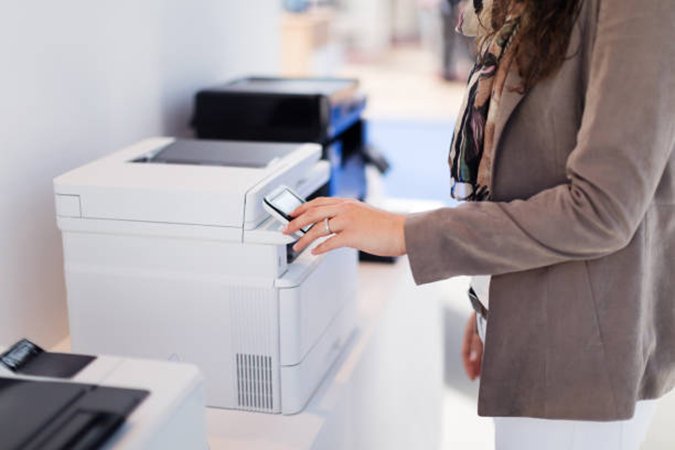If you want to work in Japan, the minimum requirement of Japanese language skills is mostly JLPT N2 level. You may already know that N1 is the hardest level, considered near-fluent. Whereas N5 is the easiest level, covering the basic level of Japanese. Suppose you have just started preparing for the JLPT exam, you need to learn some basic Kanji. Even though the JLPT N5 test is the most basic formal Japanese test, passing the JLPT N5 test is still a big achievement.
To pass the JLPT N5 test, you have to be able to read Japanese at a basic level and understand simple conversations from daily life and school. Here is the list of the Kanjis to pass the JLPT N5 exam.
| # | Kanji | Onyomi | Kunyomi | Meaning of Kanji |
| 1 | ? | いち ichi | ??(?) hito(tsu) | One |
| 2 | ? | ?? ? ni, ji | ??(?) futa(tsu) | Two |
| 3 | ? | ?? san | ?(?) mi(tsu) | Three |
| 4 | ? | ? shi | ?(?)? ?? yo(tsu), yon | Four |
| 5 | ? | ? go | ??(?) itsu(tsu) | Five |
| 6 | ? | ?? roku | ?(?)? ?? mu(tsu), mui | Six |
| 7 | ? | ?? shichi | ??(?)? ?? nana(tsu), nano | Seven |
| 8 | ? | ?? hachi | ?(?)? ?? ya(tsu), you | Eight |
| 9 | ? | ???? ? kyuu, ku | ???(?) kokono(tsu) | Nine |
| 10 | ? | ??? juu | ??? ? tou, to | Ten |
| 11 | ? | ???? ??? hyaku, byaku | ?? momo | Hundred |
| 12 | ? | ?? sen | ? chi | Thousand |
| 13 | ? | ??? ?? man, ban | – | Ten thousand |
| 14 | ? | ?? ?? sa, sha | ??? hidari | Left |
| 15 | ? | ?? ?? u, yuu | ?? migi | Right |
| 16 | ? | ?? zen | ?? mae | In front, before |
| 17 | ? | ?? ?? go, kou | ??? ??(?)? ?? nochi, ushi(ro), ato | Behind, back, later |
| 18 | ? | ???? ???? ??? jou, shou, shan | ??? ??-? ??? ?(??)? ??(?)? ????(?) ue, uwa, kami, a(geru), nobo(ru), tatematsu(ru) | Above, up |
| 19 | ? | ?? ? ka, ge | ??? ??? ??? ?(??)? ??(?)? ?(??) shita, shimo, moto, sa(geru), kuda(ru), o(rosu) | Under |
| 20 | ? | ??? chuu | ??? ??? ??(?) naka, uchi, ata(ru) | In, inside, middle, mean, center |
| 21 | ? | ??? ? gai, ge | ??? ??? ??(?)? ?- soto, hoka, hazu-, to- | Outside |
| 22 | ? | ??, ?? nichi, jitsu | ?, -?, -? hi, -bi, -ka | Day, sun, Japan, counter for days |
| 23 | ? | ??? ?? getsu, gatsu | ?? tsuki | Month, moon |
| 24 | ? | ?? nen | ?? toshi | Year |
| 25 | ? | ??? shuu | – | Week |
| 26 | ? | ??? ??? ? bun, fun, bu | ?(??) wa(keru) | Minute, part, understand |
| 27 | ? | ? ji | ??? -?? toki, doki | Time, hour |
| 28 | ? | ??? nyuu | ?(?)???(?) i(ru), hai(ru) | Enter, insert |
| 29 | ? | ???? ?? shutsu, sui | ?(?)? ?(?)? ?(??) de(ru), da(su), i(deru) | Exit, leave, go out |
| 30 | ? | ?? hon | ?? moto | Book, present, true, counter for long cylindrical things |
| 31 | ? | ?? koku | ?? kuni | Country |
| 32 | ? | ??? ?? jin, nin | ?? hito | Person |
| 33 | ? | ?? ?? ? shi, su, tsu | ?? ? ko, ne | Child |
| 34 | ? | ??? ?? dan, nan | ???? ? otoko, o | male; man |
| 35 | ? | ?? jo | ???? ? onnna, me | woman, female |
| 36 | ? | ? fu | ??? ?? chichi, tou | Father |
| 37 | ? | ? bo | ??? ?? haha, kaa | Mother |
| 38 | ? | ?? hoku | ?? kita | North |
| 39 | ? | ??? ? nan, na | ??? minami | South |
| 40 | ? | ?? tou | ??? higashi | East |
| 41 | ? | ??? ?? sei, sai | ?? nishi | West |
| 42 | ? | ? ka | ??? ?? nani, nan | What |
| 43 | ? | ?? yuu | ?? tomo | Friend |
| 44 | ? | ??? ?? kan, ken | ???? ?? ?? aida, ma, ai | Between, interval, space |
| 45 | ? | ??? ??? sei, shou | ?(??)? ?(?)? ?(?)? ?(??)? ?? i(kiru), u(mu), o(u), ha(eru), nama | Life, genuine, birth |
| 46 | ? | ? u | ??? ?? ame, ama | Rain |
| 47 | ? | ?? sui | ?? mizu | Water |
| 48 | ? | ?? sen | ?? kawa | River, stream |
| 49 | ? | ??? ?? san, sen | ?? yama | Mountain |
| 50 | ? | ? ka | ?? -?? ?- hi, bi, ho | Fire |
| 51 | ? | ??? ?? boku, moku | ?? ?- ki, ko | Tree, wood |
| 52 | ? | ?? ten | ??? amatsu | Heavens, sky, imperial |
| 53 | ? | ?? sha | ??? kuruma | Car, wheel |
| 54 | ? | ??? ??? haku, byaku | ??(?) shiro(i) | White |
| 55 | ? | ?? ? do, to | ?? tsuchi | Soil, earth, ground |
| 56 | ? | ?? kou | – | School, exam |
| 57 | ? | ??? ??? ?? kin, kon, gon | ??? ??-? -?? kane, kana, gane | Gold, money |
| 58 | ? | ?? den | – | Electricity, electric powered |
| 59 | ? | ?? sho | ?(?) kaku | Write |
| 60 | ? | ??? ??? ?? doku, toku, tou | ?(?) yo(mu) | To read |
| 61 | ? | ?? ken | ?(?)? ?(??) mi(ru), mi(seru) | See, hopes, chances, idea, opinion, look at, visible |
| 62 | ? | ??? ?? bun, mon | ?(?) ki(ku) | To hear; to listen; to ask |
| 63 | ? | ??? ?? rai, tai | ?.?? ??.?? ?? ? kuru, kitaru, ki, ko | Come, due, next, cause, become |
| 64 | ? | ??? ???? ?? kou, gyou, an | ?(?)? ?(?)? ???(?) i(ku), yu(ku), okona(u) | Going, journey, carry out, line, row |
| 65 | ? | ??? ?? dai, tai | ??(??) oo(kii) | Large, big |
| 66 | ? | ?? mai | ??(?) goto(ni) | Every |
| 67 | ? | ??? chou | ??(?)? ?? naga(i), osa | Long, leader, superior, senior |
| 68 | ? | ??? ?? kon, kin | ?? ima | Now, present |
| 69 | ? | ?? gaku | ??(?) mana(bu) | Study, learning, science |
| 70 | ? | ?? kou | ??(?) taka(i) | Tall, high, expensive |
| 71 | ? | ??? shou | ??(??)? ?-? ?-? ?- chii(sai), ko-, o-, sa- | Little, small |
| 72 | ? | ?? en | ??(?) maru(i) | Circle, yen, round |
| 73 | ? | ?? ? ki, ke | ?? iki | Spirit, mind, air, atmosphere, mood |
| 74 | ? | ? wa | ??(?)? ??? hana(su), hanashi | Tale, talk |
| 75 | ? | ? go | ?? uma | noon, sign of the horse |
| 76 | ? | ??? ??? mei, myou | ? na | Name, noted, distinguished, reputation |
| 77 | ? | ?? han | ??(?) naka(ba) | Half, middle, odd number, semi- |
| 78 | ? | ???? ?? shoku, jiki | ?(?)? ?(??)? ?(?) k(u), ta(beru), ha(mu) | Eat, food |
| 79 | ? | ??? kyuu | ??(?) yasu(mu) | Rest, day off, retire, sleep |
| 80 | ? | ?? sen | ??? ?(?) saki, ma(zu) | Before, ahead, previous, future, precedence |
Relevant Frequently Questions about Kanji
1. What is the history behind Japanese Kanji and their readings?
For a long time, Japan didn’t have a written language of its own. Rather, kanji is believed to have made its way to Japan from China sometime between the fifth and eighth centuries AD. At least, that’s what the evidence suggests—we know that there were groups forming in Japan to study the Chinese language at about this time in history. (And, on another note, the katakana and hiragana writing systems arose in the ninth century AD.)
As you can imagine, any time a language translates from one culture to another, things get changed around. Because of word adoptions, trades, and just your regular garden variety interpretations, Japanese created a language made up of many parts. Remember, while the Japanese didn’t have a written language, it did, of course, have a spoken language prior to the arrival of Chinese characters, and the attempts to merge the two helped to create these natural variations in kanji readings.
2. What is the meaning of Onyomi and kunyomi?
This leaves Japanese learners in a curious situation where we have to adapt to the fact that there are two types of kanji readings: Onyomi and kunyomi.
The two types of Kanji readings: Onyomi and Kunyomi.
Onyomi translates roughly to “sound reading.” It means that the kanji is read the same way that it would in the Chinese language—or at least is read as a close approximation of the sounds that are found in the Chinese language, sometimes with their own unique, Japanese spin. Those who already know Chinese will notice that the readings aren’t necessarily a perfect match, due to that spin.
Kunyomi is what’s known as the fully Japanese version of the kanji reading. It’s the way that the Japanese culture managed to merge the kanji with the existing spoken language they had prior to the written one. In this circumstance, the Chinese meaning of the original character is kept, but the closest equivalent to the word in Japan’s spoken language is associated with it. As you can imagine, these words weren’t always a one-to-one match, and the Japanese language added its own connotations as needed. Hiragana was later added to kanji, tweaking readings and bringing more meaning to each kanji they’re associated with.
When should You Use Onyomi?
That explains the two types of readings, but what about the rest?
Well, they all came from the onyomi side of the picture. Changes in culture and language don’t happen overnight—they happen slowly over time as people and perceptions shift. The news words arrived over time, often coming in multiple waves. Each wave came with slight variations and different ways of saying the words. Several of those waves stuck, and as people adapted to the multiple variations. This lead to a language with multiple pronunciations of the same word.
Of course, as a modern Japanese learner, you’re now faced with a quandary.
How do you know which readings to use? When should you use each one?
First, it’s more likely that you’ll use an onyomi in certain situations. Your first clue to use onyomi is when you’re looking at a word with multiple kanji strung together in a compound word. These words usually come from the original Chinese readings. Examples include:
?? (???) understanding
?? (???) short term
You’ll know that you’re on the right track when you see a word with no hiragana. Those words are strong candidates for onyomi pronunciation. The next time you’re going to consider a Japanese word as a strong contender for onyomi reading is when you’re looking at a standalone kanji. Words like ? (?? – one) or ? (?? – eight). If you see a kanji on its own, then your go-to option should be one of the onyomi readings.
When Should You Use Kunyomi?
Kunyomi is a near guarantee when you’re using proper nouns. Most notably, it’s used when you’re using native Japanese proper names. Most of the common family names are pronounced using the kunyomi version of the kanji.
So, names like ?? (???) and ?? (???) will be read as kunyomi. Just take care, because there are a few notable exceptions such as ?? (????), ?? (???) and ?? (???), which are read in the onyomi style.
The same is true of most of the proper nouns that are the names of places. For example:
?? (???) Nagano
?? (?????) Asahikawa
?? (????) Kumamoto
?? (???) Hakone
These are all kunyomi readings—obviously because they’re kanji slapped onto traditionally Japanese place names. Just like with the family names, though, there are some exceptions of note. Places such as ??? (?????? – Hokkaido) and ?? (???? ? – Tokyo) are read aloud with the onyomi. A helpful trick is to remember that a kunyomi is almost always used when you see a single kanji that’s followed by a hiragana character that makes up part of the word. These hiragana are called okurigana. You’ll see them frequently when you’re looking at verbs or adjectives. Think of the adjective ?? (??? – white) for a good example, or the verb ??? (??? – to eat).







